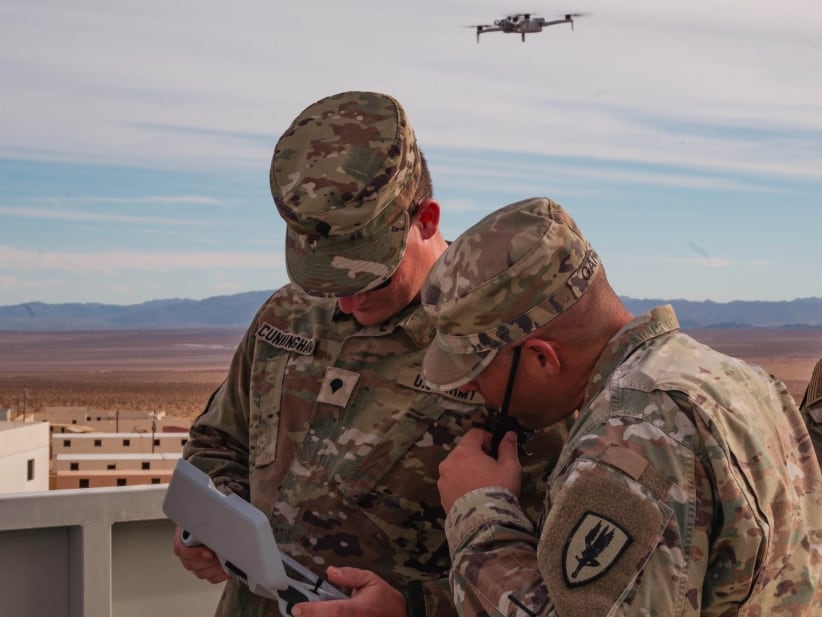The Navy released a long-awaited final request for proposals Sept. 18 for the re-compete of its Next Generation Enterprise Network contract. But it’s part one of two, covering only the hardware side of things as the service looks to overhaul its Navy-Marine Corps Intranet.
According to analysts at Deltek, each piece of the NGEN-R request is valued at roughly $250 million over a three-year period, per estimates from Space and Naval Warfare Systems Command. That’s significantly lower than NGEN’s original $3.5 billion price tag.
Specifically, the RFP seeks hardware devices for use on the Department of Defense’s classified and unclassified networks, including desktops, laptops, two-in-one detachable devices, tablets, ultra-small desktop computers, as well as thin- or zero-client devices. A single device could serve multiple users and associated accounts, according to the RFP.
But for the roughly 400,000 devices NGEN-R looks to replace, the service in particular is looking at an end-user hardware-as-a-service arrangement.
“It’s breaking out the services that are being provided in a way that allows us to gain most effective advantage of how industry does business today,” Capt. Don Harder, deputy program executive officer for Navy enterprise information systems, told Federal Times in a recent interview.
“The end user of hardware and devices as its own separate contract, there are those suppliers out there that that’s what they specialize in. By breaking that out into its own contractual component within the NGEN-R construct … we believe will allow us to get more effective advantage to pricing on those components.”
The language in the RFP solidifies Harder’s thoughts as part of the statement of work.
“In acquiring EUHWaaS, the Government is only acquiring the service of using an EUHW device. This is not a purchase, and titles for all EUHWaaS devices remain with the Contractor,” the RFP states. “EUHWaaS includes the provisioning, storage of spares, configuration, testing, integration, installation, operation, maintenance, [end-of-life] disposal of NIPRNet and SIPRNet EUHW, and internal storage device removal and destruction requirements.”
Bids for the hardware piece of NGEN-R are due Nov. 19.
The second part of the NGEN-R RFP, service management integration and transport or SMIT, is expected in the next 30 days, according to a Navy spokesman. SMIT will cover much of NMCI’s backbone and functionality, including services ranging from help desk to productivity suites to network defense — and how they’re technically provided.
Splitting NGEN-R into two separate contracts was an intentional move designed, at least in part, to give the Navy greater flexibility in the capabilities available to users, and the options for buying them, as technology evolves.
“We are modifying how the services are broken out in a way that it allows us to sever some of those services as new mechanisms [and] provide [them as they are] brought into play or brought to our attention,” Harder said, using cloud capabilities as an example.
“We may allow a mechanism to pull some of those into either a hybrid cloud or a cloud solution in the future. If so, it may go on a separate contractual vehicle at which point in time we would sever those services away from the SMIT vehicle. So, we’re looking at how we take those services and how we manage them contractually, which would allow us, again additional flexibility later on down the road.”
Harder said that throughout the development of NGEN-R, he’s been eyeing not just the Navy, but also the broader government to benefit from the new approach.
“We’re building in that flexibility that allows the government the ability in the future even to find components of services that can be done in a more effective or efficient way [and] either sever them or modify them separately as opposed to having to break apart the entire contract to do something,” he said.
The hardware piece of NGEN-R was released less than two weeks after Navy officials announced a one-year, $787 million extension to the incumbent provider, Perspecta.
Harder declined to put a dollar figure on the NGEN-R contract, as did other Navy officials.
The RFP comes after several delays — officials previously had said the contract would be up for bidding this summer. According to Harder, prior to release the RFP had to be approved by leadership at the Office of the Assistant Secretary of the Navy for research, development and acquisition, as well as the Office of the Secretary of Defense’s Defense Procurement and Acquisition Policy office.
Harder said the Navy has taken extra time to shore up “the education piece” — ensuring the contracting process meets leaders’ expectations, particularly with the new strategy. And IT modernization also has come into play, with officials from the broader DoD looking to NGEN as a possible model or even contract vehicle for defense networks down the line, he said.
“We need to ensure that what we have placed in the contract and how we’re going about the contract meets leadership expectations. And because we are doing things in a different way, that’s taking a little bit of time,” Harder said. The Navy’s approach to running NMCI today is “one of the more cost-effective ways of managing networks. And there is a desire as part of one of the many IT reform efforts [for possible] integration of networks in the future to mimic or, potentially, even ride on our contracts.”








